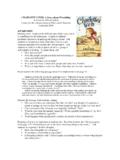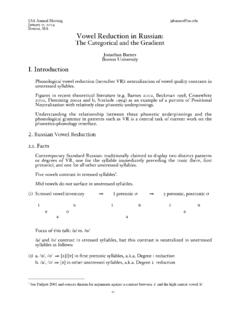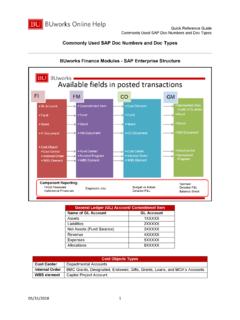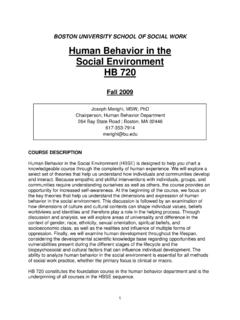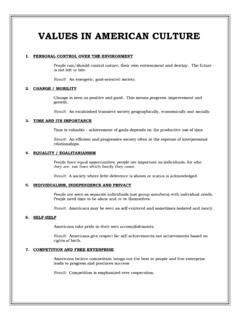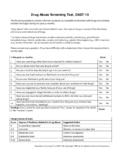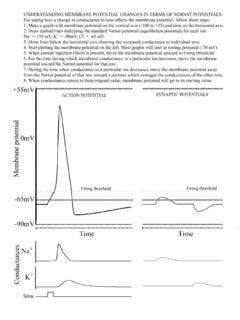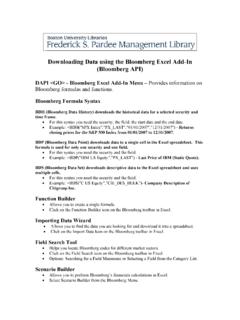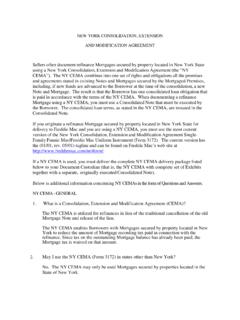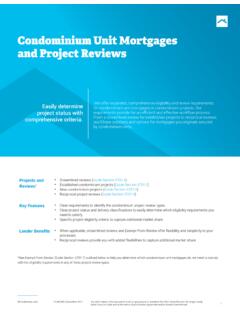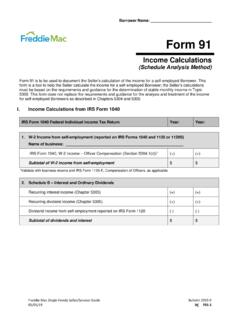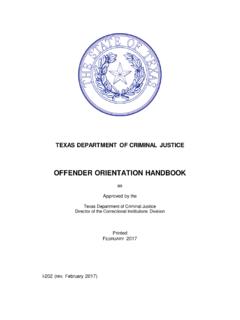Transcription of Student Study Guide - Boston University
1 Student Study Guide Macroeconomics in Context Third Edition Neva Goodwin, Jonathan M. Harris, Julie A. Nelson, Pratistha Joshi Rajkarnikar, Brian Roach, Mariano Torras Copyright 2018 Global Development And Environment Institute, Tufts University . Copyright release is hereby granted to instructors for educational purposes. students may download the Student Study Guide from Comments and feedback are welcomed: Global Development And Environment Institute Tufts University Medford, MA 02155 E-mail: Chapter 1 Economic Activity in Context 1 CHAPTER 1 ECONOMIC ACTIVITY IN CONTEXT Macroeconomics in Context (Goodwin, et al.) Chapter Overview This chapter introduces you to the basic topics of macroeconomics, and presents the main macroeconomic goals: 1) living standards growth, 2) stability and security, and 3) financial, social, and ecological sustainability.
2 The chapter highlights that the goal of living standards growth may or may not contribute to the general goal of human well- being. The chapter also provides a brief overview of the major historical developments in macroeconomics, from classical economics, to Keynesian and monetarist economics, and finally to the challenges in the 21st century. Chapter Objectives After reading and reviewing this chapter, you should be able to: 1. Distinguish the concerns of macroeconomics from microeconomics. 2. Define the difference between normative and positive questions. 3. Discuss the relationship between economics and well-being. 4. Identify and describe the three main macroeconomic goals. 5. Identify and distinguish the major historical traditions of economic thought. Key Terms economics microeconomics macroeconomics recession unemployment inflation macroeconomy global economy economic actor (agent) positive questions normative questions assets well-being living standards growth economic growth economic development labor productivity business (trade) cycle technological progress conscious consumption restorative development precautionary principle contextual economics classical economics division of labor specialization capitalists laissez-faire economy Say s Law aggregate demand Keynesian economics monetarism Chapter 1 Economic Activity in Context 2 Active Review Fill in the Blank 1.
3 While the Study of economic activities of individuals, households, and business at the sub-national level is the concern of the national and global level is the concern of , the Study of economic activities of . 2. Questions about facts or how things are are about values and how things should be are questions, while questions questions. 3. The three main macroeconomic goals identified in this chapter are , , and . 4. The process of moving from a situation of poverty and deprivation to a situation of increased production and plenty is referred to as . 5. The increase in the level of production in a country or region is called growth while improvements in diet, housing, medical attention, education, working conditions, access to care, transportation, communication, entertainment, etc.
4 Is called growth. 6. The fluctuations in the level of production, including recessions on the one hand and booms on the other hand, is called . 7. The goal that recognizes a serious responsibility to future generations is the goal of . 8. The school of economics that is associated with the idea that individual self-interest is a positive force and that governments should let markets function without interference is called . 9. The economist who argued that the market mechanism can fail by leaving insufficient demand and that governments could intervene by increasing aggregate demand was named . 10. The school of thought that argued that governments should aim for steadiness in the money supply rather than play an active role is called.
5 True or False 11. Economic phenomena such as the rate of unemployment and inflation are studied in microeconomics. Chapter 1 Economic Activity in Context 3 12. Living standards growth is defined as increases in the level of production in a country or region. 13. During a recession, the economy often has higher rates of unemployment, whereas during a boom, the economy often has higher rates of inflation. 14. Monetarists believe the government should change money supply to boost aggregate demand during a recession. 15. According to the Keynesians, the government can reduce unemployment through changes in its spending and taxation policies. Short Answer 16. What types of questions would concern microeconomics, versus macroeconomics? 17. How have economists traditionally defined economic growth, and how is that different from living standards growth ?
6 18. What are the three basic economic questions that economists often address when examining how much economic output is produced? 19. Once countries already have a high level of production, how might they achieve living standards growth? 20. Why is the goal of stability and security important to many people? What problems typically emerge during periods of instability? 21. The goal of sustainability requires that we address what three questions? 22. Explain how the classical school views the role of markets and government intervention in fighting business cycles. 23. Explain how Keynesian economics views the role of markets and government intervention in fighting business cycles. 24. Explain how Monetarist economics views the role of markets and government intervention in fighting business cycles.
7 25. Describe some of the key changes that the economy has undergone since the 1980s. 26. What two developments are demanding new ways of looking at the economic world in the 21st century? What kinds of sustainability questions do they raise? Chapter 1 Economic Activity in Context 4 Self Test 1. With what kinds of topics does macroeconomics concern itself? a. Economic activities of individual firms, households, and other organizations b. Forces of supply and demand in a particular market c. Consumer behavior and firms output decisions d. The labor market, wages, and hiring decisions e. Aggregate economic phenomena like the rate of unemployment and inflation 2. Which of the following is an example of a normative question? a. What is the nation s rate of economic growth?
8 B. What is the nation s rate of inflation? c. What is the nation s rate of unemployment? d. What is the nation s level of GDP? e. Is the goal of sustainability of greater importance than the goal of economic growth as we move into the 21st century? 3. Which of the following is one of the three macroeconomic goals discussed in the text? a. Growth in the size of corporations b. Living standards growth c. Growth in trade and globalization d. Technological innovation e. None of the above 4. Which of the following is not an example of one of the three macroeconomic goals discussed in the text? a. Preventing the economy from experiencing too much unemployment. b. Preventing the economy from experiencing too much inflation. c. Keeping living standards high enough for people to live decent, meaningful lives.
9 D. Making sure the economy is sustainable into the future. e. Providing the best environment for corporations. Chapter 1 Economic Activity in Context 5 5. What explains the fact that the value of global production grew by a factor of between 1960 and 2015, while the value of global production per capita has grown by a factor of a. Global population also grew, though not as fast as total production. b. The increase in global production has occurred simultaneously with a decline in global population. c. The increase in global production has occurred simultaneously with growth in the global workforce. d. The increase in global production has occurred simultaneously with decline in the global workforce. e. The growth in the global population has been greater than the growth in global production.
10 6. How is labor productivity defined? a. The level of output produced per capita. b. The level of output produced per worker (or worker-hour). c. The level of output produced as a share of GDP. d. The level of human capital in the workforce. e. The level of output produced per capital input. 7. What problems are we most likely to see at which stage of the business cycle? a. High inflation during recessions. b. High unemployment during booms. c. Low inflation during booms. d. High unemployment during recessions. e. Both high unemployment and high inflation during booms. 8. Why is the instability of the business cycle a problem? a. During recessions there is high unemployment, and resources are underutilized. b. High unemployment is associated with individual and social stress, such as suicide, domestic violence, illness and crime.
